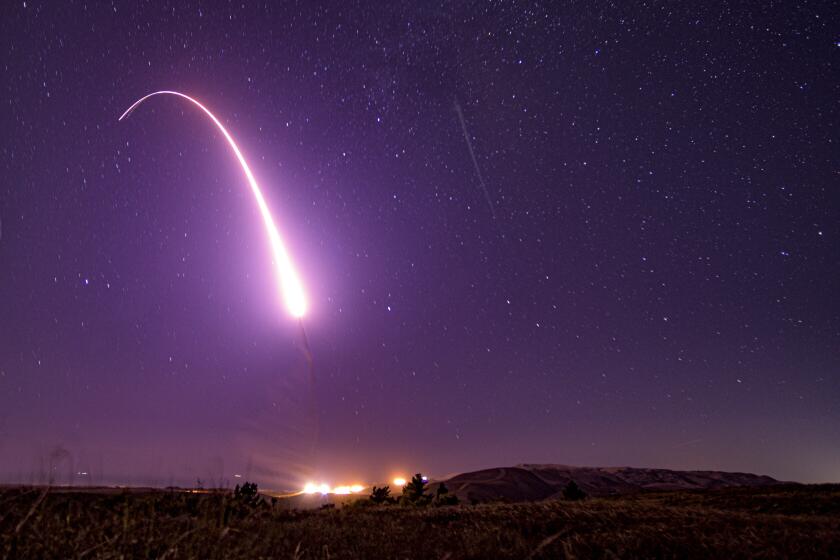Glimpse of a Rainbow
- Share via
There’s been more talk than action out in the Owens Valley for decades. But for first time in years there’s cautious optimism that the long, bitter feud over water between this farming community and the thirsty Los Angeles Department of Water and Power may end.
Since Los Angeles opened its famed aqueduct in 1913, fresh water from the Owens River, which had flowed into Owens Lake, has instead poured into swimming pools and sinks and onto lawns 200 miles south. Owens Lake, once 110 square miles of water, swooping birds and graceful aquatic plants, has since 1930 been dry. Bone-dry. Apart from the anger among folks who remember that the behemoth water agency bought up good farmland to get the water rights, there’s the dust. Every stiff breeze kicks up clouds of salty dust--the worst particle pollution in the nation--causing asthma and other breathing problems for many in nearby towns like Keeler and Ridgecrest.
The federal Clean Air Act says this nasty dust must be cut back substantially by 2001, and state law requires that the DWP fund much of the work. The most cost-effective plan, developed with DWP input, would let water flow back into a small part of the lake bed, put gravel in other parts, and plant grasses and irrigate still other sections.
Even with that plan in hand, the DWP stonewalled Owens Valley air quality leaders, as it had for 14 years, because the cleanup would cost it between $91 million and $300 million and mean it could divert less water for customers, resulting in higher rates.
Last summer, with the Great Basin Unified Air Pollution Control District poised to start work, the DWP used its old big-foot tactics, threatening to sue the local agency and withhold its operating funds. The DWP proposed no alternative but rejected the plan on the table.
Since then, however, the DWP, with prodding from the Riordan administration, has wisely had second thoughts. The two sides are now engaged in settlement talks; the goal, cutting the dust to federal minimums, is not negotiable but the way it gets met is. The Great Basin board has set a deadline of Dec. 17, its next meeting, for an agreement. No one is talking much, but there is reason for hope. Once the rhetorical dust clouds settle, the real ones will as well. That’s what everyone wants.
More to Read
Sign up for Essential California
The most important California stories and recommendations in your inbox every morning.
You may occasionally receive promotional content from the Los Angeles Times.










